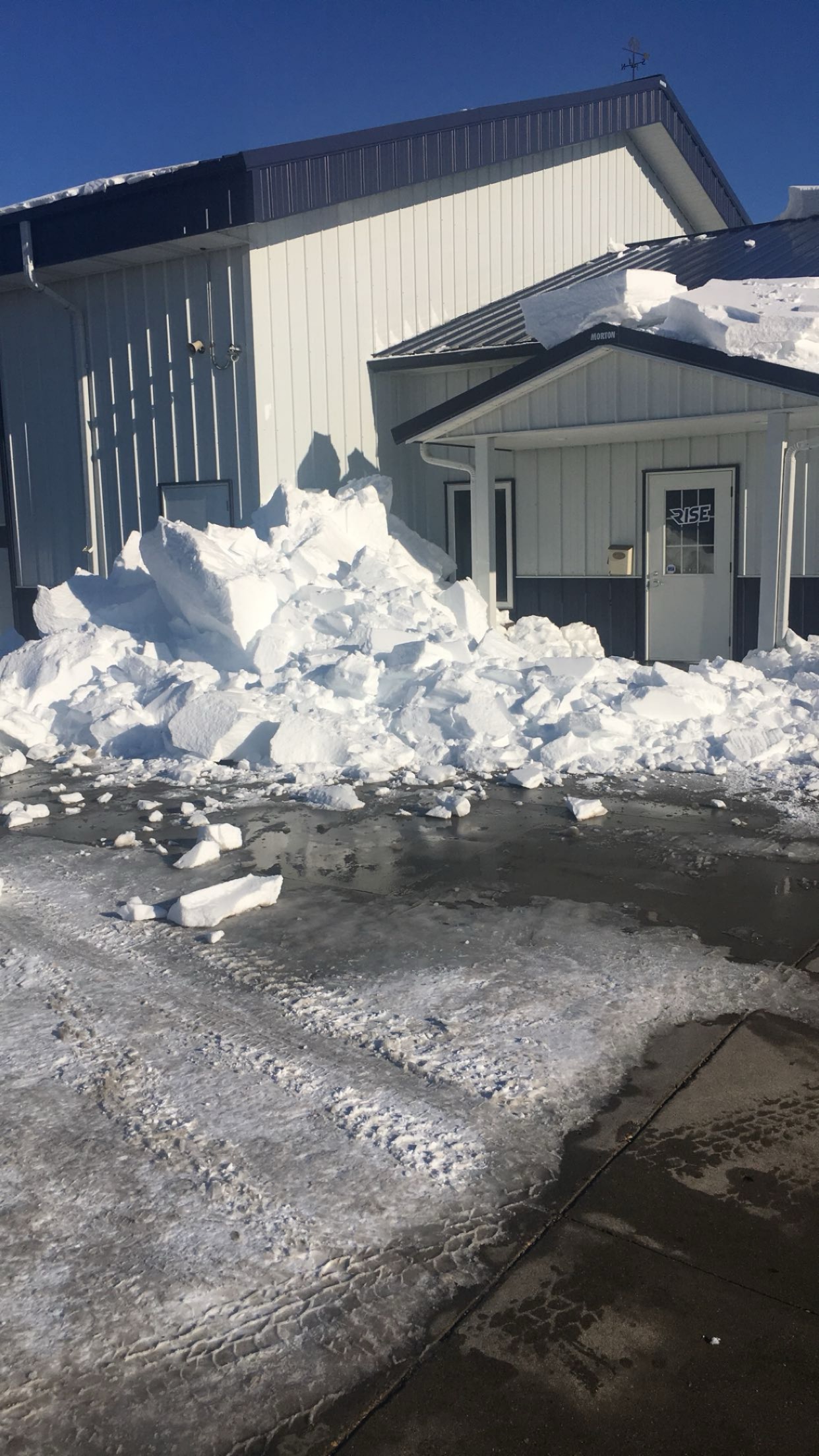How to shovel snow properly
Chase Morlock
•
Living in the Fargo-Moorhead area, you’re no stranger to heavy snowfalls and the necessary chore of shoveling. The picture above is from a winter day at our previous Rise location, and it may be an all too familiar sight to you if you’ve lived in this area for a while. While shoveling may seem pretty straightforward, improper technique can actually lead to some pretty painful injuries and strain. Here’s a guide to ensure you’re clearing your driveway or sidewalk safely and effectively this winter.
Proper snow shoveling techniques
Warm up first
Just like with any physical activity, warm up your muscles before you start. Perform some light stretches or a 5-minute brisk walk to prepare your body.
Use the right shovel
Opt for a lightweight, ergonomic shovel with a curved handle to reduce bending. A proper shovel will lessen the strain on your back and arms.
Bend your knees and lift with your legs
When lifting snow, bend your knees and use your legs to do the heavy lifting. Avoid bending at the waist to protect your lower back.
Push, don’t throw
Whenever possible, push the snow instead of lifting and throwing it. This minimizes strain on your body and speeds up the process.
Work in small sections
Shovel smaller loads of snow rather than overloading your shovel. This prevents overexertion and helps maintain steady progress.
Take breaks
Shoveling snow can be a fairly intense workout, especially if it’s wet, heavy snow. Taking a break during shoveling may sound silly to us born-and-raised Midwesterners, but your body will thank you if you pause every 15-20 minutes to hop inside to rest and hydrate.
Improper snow shoveling mistakes to avoid
Skipping the warm-up
Jumping straight into shoveling can lead to muscle strains or even injuries, especially in cold weather.
Using an unsuitable shovel
A heavy or awkwardly shaped shovel can increase the risk of back pain or wrist strain.
Twisting while throwing snow
Rotating your torso to toss snow over your shoulder is a common mistake. This twisting motion can harm your spine.
Lifting too much snow at once
Overloading your shovel can lead to fatigue and increase the likelihood of losing your balance or straining your back.
Ignoring your posture
Shoveling with a rounded back or straight legs puts undue stress on your lower back.
Neglecting breaks
Pushing yourself to clear everything in one go can lead to using improper form once you start to fatigue.
A quick tip: Treat it like exercise
Snow shoveling is an excellent workout, engaging your core, legs, and arms. Approach it as you would a gym session: warm up, use proper form, and pace yourself. After you’re done, don’t forget to cool down and stretch to help your muscles recover.
Reframing your mindset around shoveling to be less of a chore and more of a workout can help it feel a bit more positive. And we all know that in the middle of a blizzard on a -10 degree day, we can all use an extra dose of positivity before heading outside to shovel the driveway! At Rise, we are a functional fitness facility, which means we train our members for real life. From goals like competing in marathons to everyday applications like shoveling snow, we know that strength training is the key to being able to thrive in your 30s, 40s, 50s, 60s, 70s and beyond. If you’d like to chat with a Rise coach about how we can help you increase strength, lose weight, and regain control of your health, we’d love to meet with you! You can schedule a free fitness consultation here.